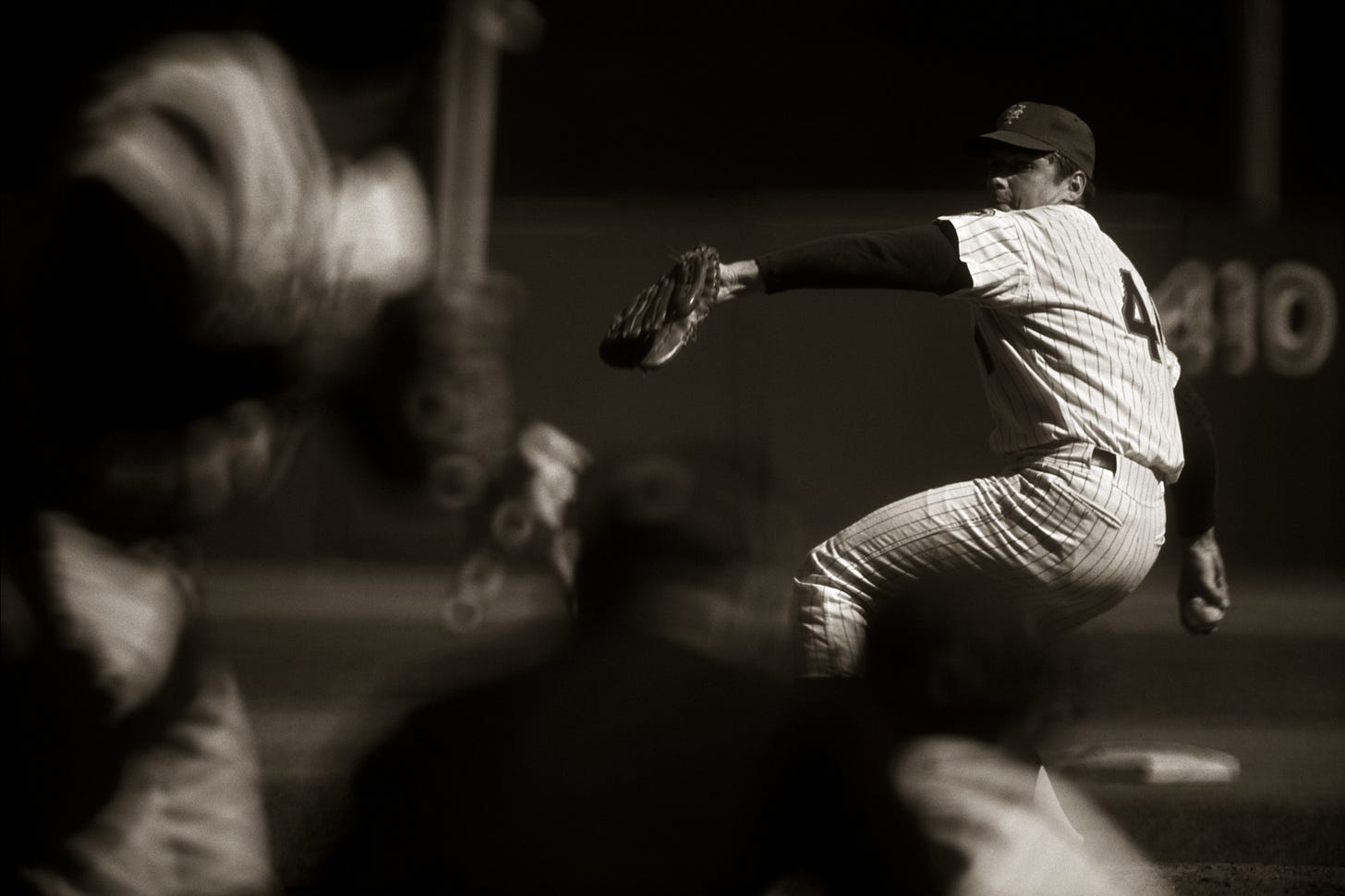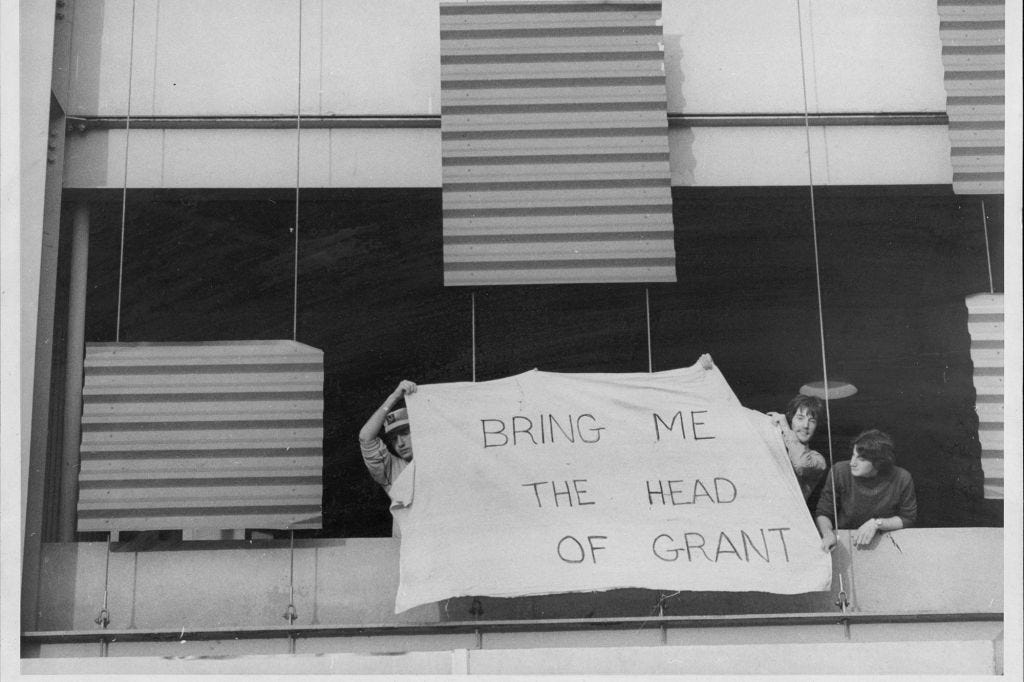The Worst Trade in Baseball History
“I realized I could no longer work for Mr. [Donald] Grant. The situation was impossible.” - Tom Seaver
Every year since 1977, New York Mets fans have viewed the Major League Baseball trade deadline as the darkest day in team history.
The trade deadline – June 15, 1977 – was the day the Mets traded Tom Seaver.
Trading Seaver, best known to fans and the media as “The Franchise” or “Tom Terrific,” marked the beginning of a long, dreadful decline for the organization and, despite the pain and suffering, the deal remains one of the most compelling stories in team history.
After checking in to his hotel in Atlanta, Seaver, Jerry Koosman and Bud Harrelson settled in for dinner at a nearby restaurant. The turmoil, already in headlines on the back pages of every New York newspaper, was swiftly heading toward an unthinkable resolution.
“I’m gone,” a melancholy Seaver told Harrelson and Koosman. “I don’t think anybody can save it.
Podcast: Pat Jordan
Seaver was right. In less than 72 hours he would be packing his bags for Cincinnati.
As management and Seaver struggled through the spring to work out a new contract, the Mets pitcher decided to visit Joe McDonald, then the Mets general manager. “You know what he said to me? He said, ‘No one is beyond being traded. I have one deal I can call back on right now.’ I was livid,” Seaver said. “I said, ‘Pick up the f—ing phone and make the trade.’ But he never moved.”
It was later revealed, McDonald was not bluffing Seaver. The deal was a real possibility. The Mets GM had a deal in place that would have sent “The Franchise” to the Los Angeles Dodgers in exchange for Don Sutton. All McDonald had to green light was Sutton’s request to make a spot for him in the broadcast booth upon retirement.
With a deal on the brink, the media reported the supposed trade, Mets fans and management balked and negotiations broke off.
It was the beginning of the end for Seaver. “My unhappiness started … during my contract negotiations,” Seaver said in a 1977 post-trade interview with Jack Lang published in The Sporting News. “They charged me with a lot of things … threatened to trade me … all of a sudden, nine years of performance and loyalty was being thrown out the window.
“I kept it all inside for a year,” Seaver continued. “ … I realized I could no longer work for Mr. [Donald] Grant. The situation was impossible.”
The days leading up to the Seaver trade were like a soap opera – and the New York media was eating it up as fast as the could and spitting it back to the public in flashy headlines. The allegations and finger-pointing were chronicled by the late, legendary New York columnist Dick Young who, in hindsight, is believed to be the man responsible for pushing the button on the trade.
Podcast: Pat Zachry
As the 1977 pushed on toward summer, the heat between Seaver and Grant was intensifying. The media wasn’t helping. Journalists were polarized on the Seaver contract issue.
Seaver was making $225,000 in 1977 and the free agency, then in its infancy, was already driving up salaries, especially in New York. Everyday, the Mets pitcher had to suffer the splashy headlines Yankee owner George Steinbrenner was creating when he inked Reggie Jackson to a four-year, $2.7 million deal (big numbers in 1977).
Seaver felt underpaid and underappreciated and he let Grant know it. He wanted a new deal, fair market value, based on a growing list that “sub-Seaver” quality players were signing in the free agent market.
Grant called Seaver an “ingrate.” Seaver felt Grant treated him as an underling, and he didn’t appreciate it. “Grant has a way of talking down to everyone,” said Seaver. “Grant only understands what he wants to understand. You can be talking to him and you suddenly are aware he isn’t understanding a thing you say, because he isn’t listening.”
The war of words created a deeper disrespect between Grant and Seaver, pushing the parties further apart.
With the deadline looming, Seaver had breakfast with new Mets manager Joe Torre. Using the manager, Grant asked Torre to play mediator. The Mets chairman of the board had his manager convince Seaver to reach out to in an attempt to bridge the gap.
Seaver, anxious and hoping to remain a Met, called Grant. They talked for nearly an hour. “I didn’t even bring up a lot of the old junk, because I knew it wouldn’t make a difference,” Seaver said. “When we finished talking, I knew I was going.”
Seaver made one last ditch effort to save himself from a trade. On the day before the trade deadline, he stepped over Grant, and called to Lorinda de Roulet (daughter of the late Joan Payson). Seaver stated his case, then asked for de Roulet to break he own rules and interject. She agreed. After four phone calls, it appeared a deal had been struck and Seaver would remain a Met.
In reality, it was the calm before the storm. Seaver was in good spirits when he woke up in his Atlanta Marriott hotel room on the morning of June 15, 1977. Then, the bottom fell out.
While dining poolside with Lang, Seaver was blindsided by the news of a story written in that mornings New York Daily News by Young. According to the story, Young believed Seaver and his wife Nancy were jealous of former Met Nolan Ryan and his wife Ruth for financial reasons. Seaver sat and listened as the story was read aloud to him at the table.
Seaver blew a fuse. He charged off to his room and immediately called Mets public relations director Arthur Richman, shouting “get me out of here!”
Next, Seaver sent a note to de Roulet, writing, “Tell Joe McDonald everything I said last night is forgotten. I want out. The attack on my family is something I just can’t take.”
Seaver then packed his belongings and flew home to Greenwich, Ct. to avoid the media.
Podcast: Doug Flynn
Before that nights game at Atlanta-Fulton County Stadium over a hundred members of the media squeezed into a scorching hot clubhouse as the Mets officially announced that Tom Seaver – “The Franchise” – had been traded to the Cincinnati Reds for pitcher Pat Zachry, light-hitting second baseman Doug Flynn and a pair of outfield prospects, Steve Henderson and Dan Norman.
Podcast: Steve Henderson
The news was stunning. Met fans were aghast. Seaver’s teammates also struggled to comprehend the trade. “How could they trade him?,” Koosman said in hindsight. “We lost someone who shouldn’t have been traded, and we were in mourning … It was as if we had lost our leader, our spokesman.
“It was tough to see it happen,” Koosman remembered. ”I remember that day it happened … a lot of tears were shed.”
“The impact was awesome,” said former Mets infielder Len Randle. “I had no idea a player could have that much impact on a city, since Joe Namath, I guess … it was a bad move.”
Young, the New York Daily News reporter, lauded the deal, a decision that nearly killed him professionally – and over time personally.
In a letter to the editor published in the July 9, 1977 issue of Sporting News, one fan wrote:
Since Dick Young is the correspondent whom you employ from New York, objectivity demands that you inform your readers of the part Young played in the Mets’ trade of Tom Seaver.
Young has become a hatchet man for Mets’ Board Chairman Donald Grant. Seaver decided he didn’t want to leave until Young wrote a column slurring Seaver’s family. It capped a long campaign against Seaver and other Mets’ dissidents which began when Young’s son-in-law went to work for Grant. Young never acknowledged his family connection with the Mets.
It remained Maury Allen of the New York Post to reveal the truth writing, Young makes the concept of journalistic integrity a joke.
Koosman later said, “Getting Tom Seaver traded became Dick Young’s legacy. All the great things you do in your career, and you do one thing that’s not correct, and you get remembered for it. He’s never been forgiven … in New York.
”








